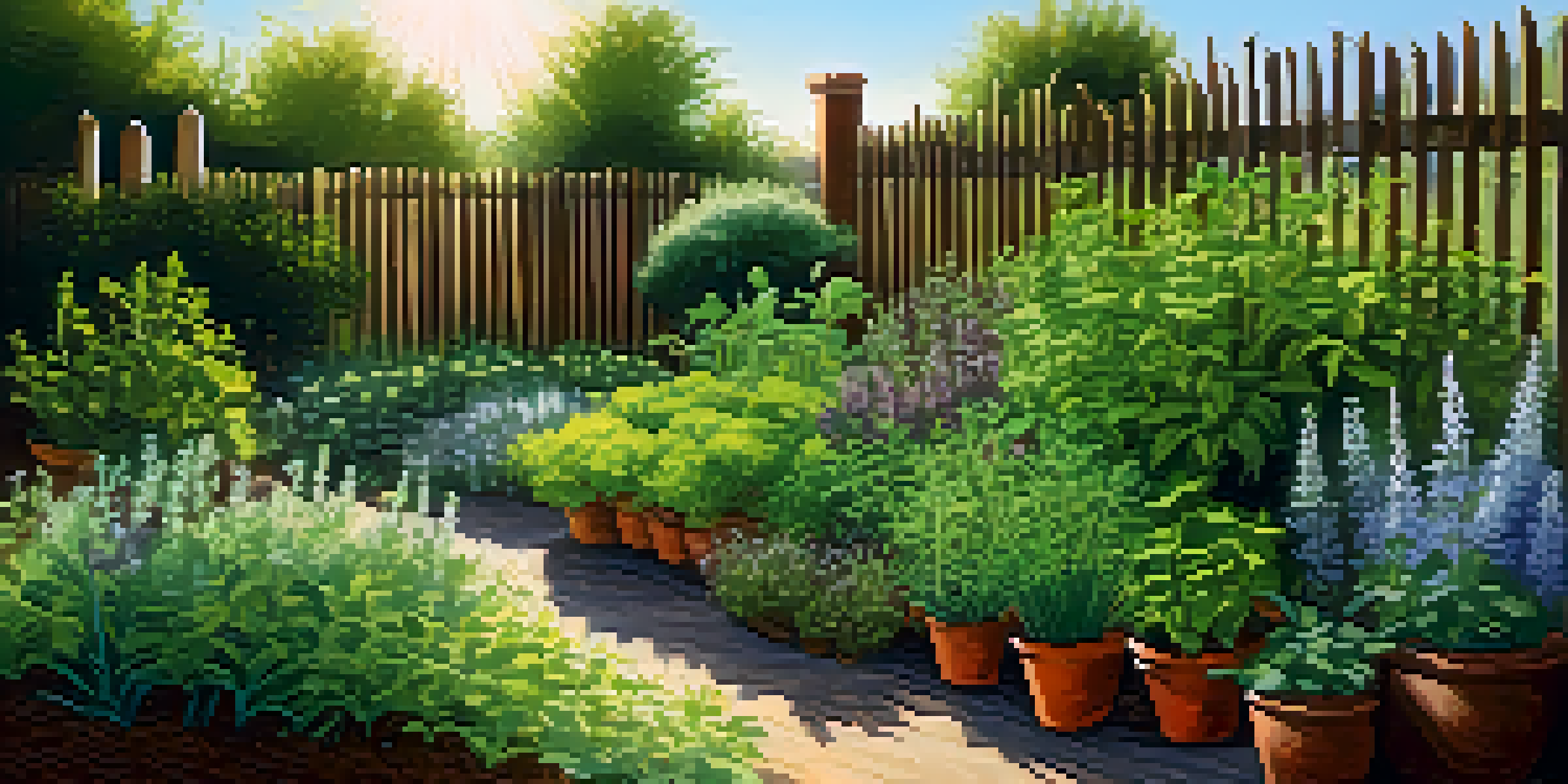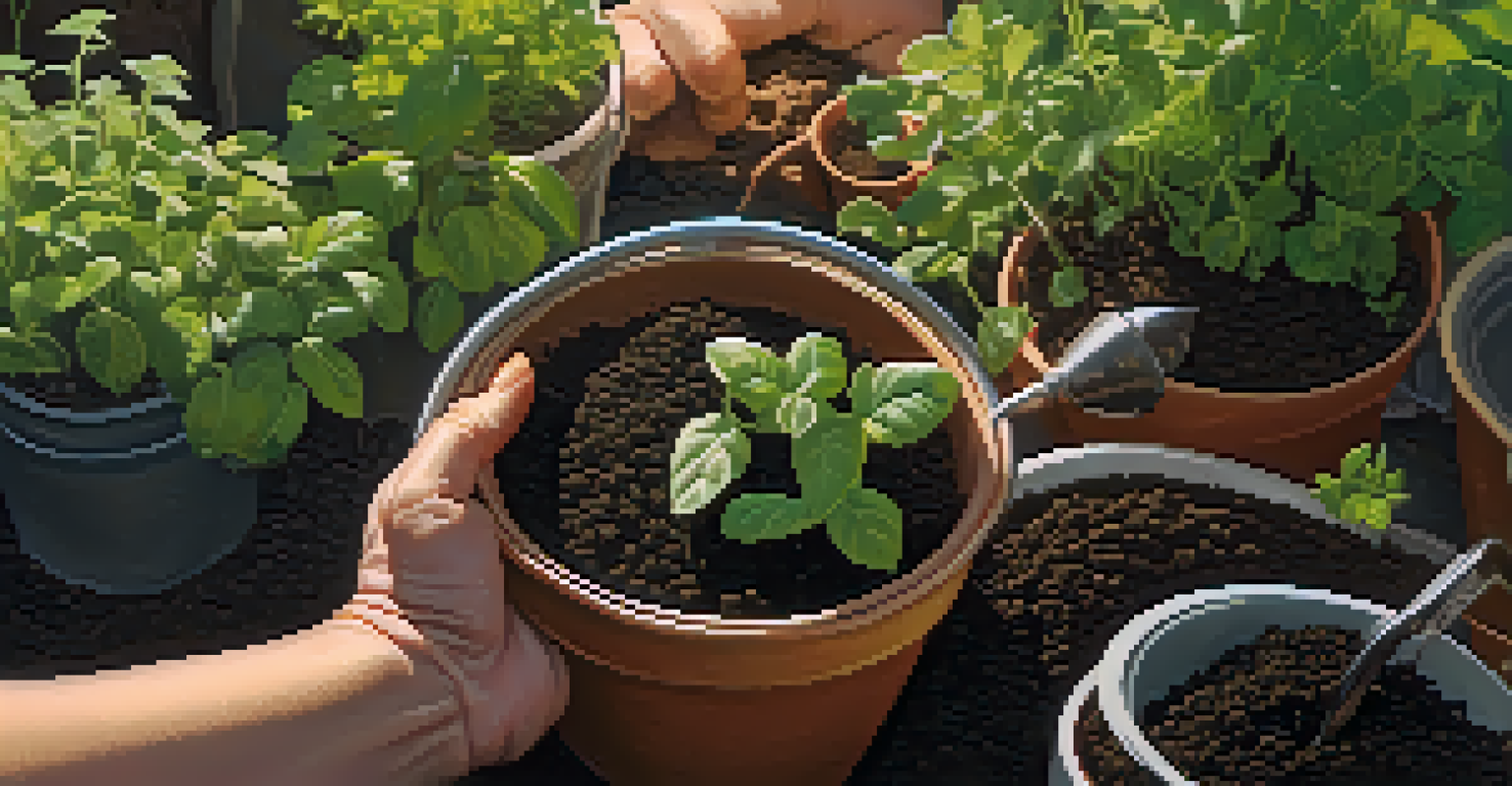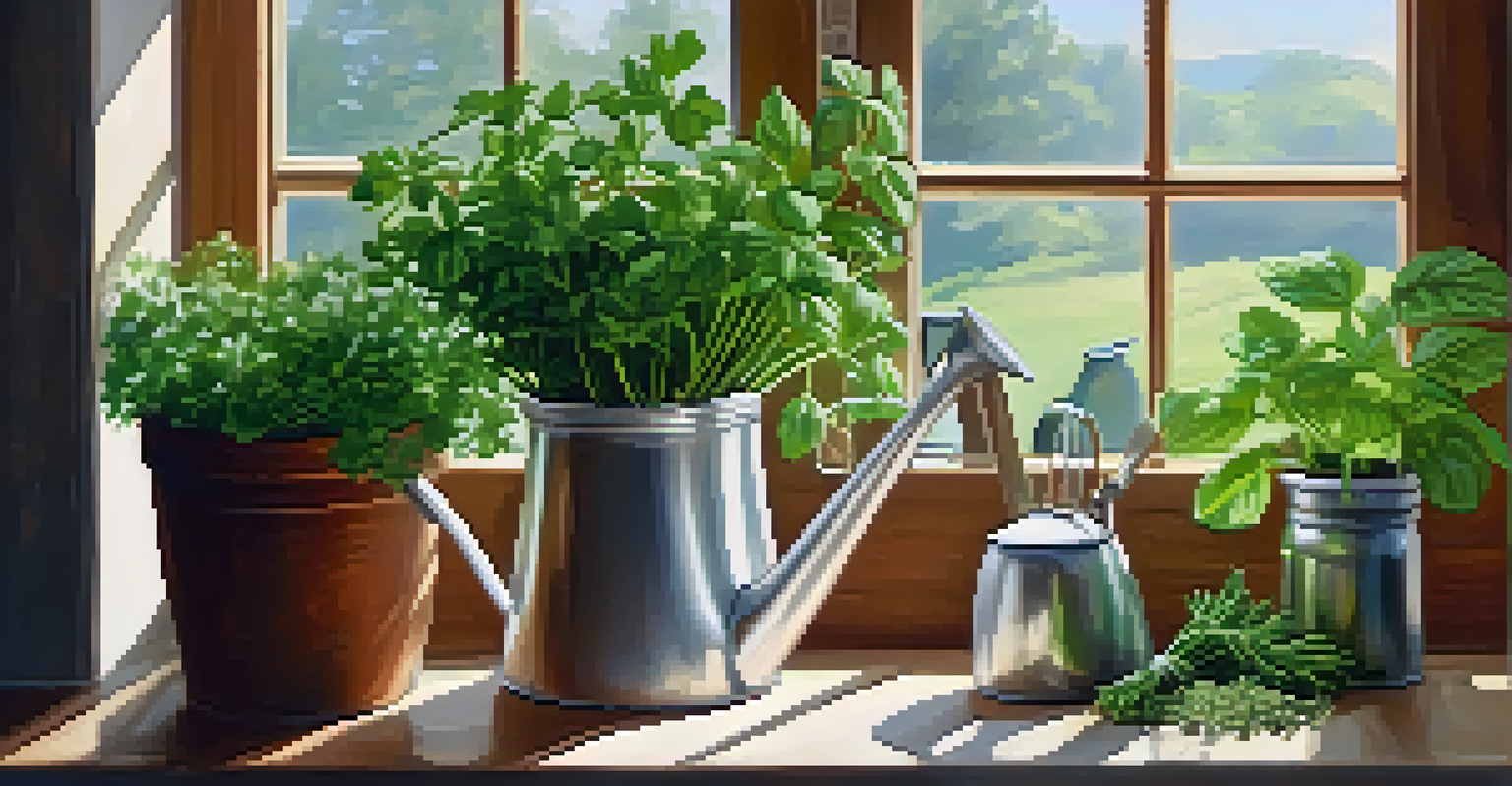Herb Gardening Challenges: Solutions and Tips

Understanding Common Herb Gardening Challenges
Herb gardening can be a rewarding experience, but it's not without its hurdles. Common challenges include pests, poor soil conditions, and inadequate sunlight. These issues can lead to disappointing yields and unhealthy plants, discouraging many gardeners from continuing. Recognizing these challenges is the first step in ensuring a successful herb garden.
Gardening is the purest of human pleasures.
For instance, pests like aphids and spider mites can wreak havoc on your herbs if not managed properly. Similarly, soil that lacks nutrients can stunt plant growth, leaving you with sparse, weak herbs. And then there's sunlight—herbs like basil and rosemary thrive in full sun, so any deficiency in light can significantly affect their health.
By understanding these common challenges, you can better prepare yourself for the adventure of herb gardening. This awareness helps you to devise strategies to tackle these obstacles head-on, ensuring your garden flourishes against the odds.
Dealing with Pests Naturally
Pests can be a gardener's worst nightmare, but there are natural ways to combat them. One effective method is introducing beneficial insects, such as ladybugs, which feast on aphids. You can also use neem oil, a natural pesticide, to deter unwanted pests without harming your plants or the environment.

Another option is to plant companion herbs that repel pests. For example, planting basil near tomatoes can help keep pesky insects at bay. This method not only protects your herbs but also enhances the overall health of your garden by promoting biodiversity.
Tackle Common Herb Gardening Issues
Recognizing challenges like pests, poor soil, and insufficient sunlight is crucial for a thriving herb garden.
By embracing these natural pest control methods, you can maintain a thriving herb garden while minimizing your reliance on chemical treatments. This approach not only benefits your plants but also contributes to a healthier ecosystem.
Improving Soil Quality for Better Growth
Healthy soil is the foundation of a successful herb garden. If you're dealing with poor soil conditions, consider enriching it with organic matter like compost or well-rotted manure. This can improve soil structure, enhance nutrient availability, and promote beneficial microbial activity.
To plant a garden is to believe in tomorrow.
Testing your soil pH is also a great practice, as many herbs prefer slightly acidic to neutral soils. If your soil is too alkaline, you can amend it with organic materials like pine needles or sulfur to lower the pH. Conversely, if it's too acidic, adding lime can help balance it out.
Investing time in improving your soil quality will pay off in the long run. Healthy soil leads to robust plants, resulting in a bountiful herb garden that provides you with fresh flavors for your culinary creations.
Maximizing Sunlight for Herb Growth
Sunlight is crucial for the growth of herbs, and positioning your plants correctly can make all the difference. Most herbs thrive in full sun, which means they need at least six to eight hours of direct sunlight each day. If your garden is shaded, consider relocating your pots or even using reflective surfaces to maximize light exposure.
If you’re gardening indoors, placing your herbs near a south-facing window can provide the necessary light. Additionally, using grow lights can supplement natural light, especially during the shorter days of winter. This ensures your herbs receive the energy they need to thrive year-round.
Natural Pest Control Techniques
Utilizing beneficial insects and companion planting can effectively manage pests without harmful chemicals.
By paying attention to your herbs' sunlight requirements, you can create an ideal environment for growth. This proactive approach can lead to lush, vibrant plants that not only look great but also provide delicious flavors for your meals.
Managing Watering Needs for Herbs
Proper watering is essential for herb gardening success, as both overwatering and underwatering can harm your plants. A good rule of thumb is to check the soil moisture before watering; if the top inch of soil is dry, it’s time to water. However, different herbs have varying water needs, so it’s important to tailor your approach accordingly.
For instance, herbs like rosemary prefer drier conditions, while basil enjoys more moisture. Using self-watering pots or drip irrigation systems can help maintain consistent moisture levels, reducing the risk of plant stress. Additionally, mulching around your herbs can retain soil moisture and regulate temperature.
By managing your watering practices carefully, you can create a thriving environment for your herbs. This simple yet effective strategy can prevent common issues like root rot and promote healthy, vigorous growth in your garden.
Fertilizing Herbs the Right Way
Fertilization is another key aspect of successful herb gardening. While herbs generally require less fertilizer than other plants, providing them with the right nutrients can enhance their growth and flavor. Opt for organic fertilizers, such as fish emulsion or compost tea, which offer slow-release nutrients that herbs can readily absorb.
It's important to fertilize your herbs during their active growing season, typically in spring and summer. However, be cautious not to over-fertilize, as this can lead to lush foliage at the expense of flavor. A balanced approach ensures your herbs receive adequate nutrition without compromising their taste.
Optimize Soil and Watering Practices
Improving soil quality and managing watering needs are essential for promoting healthy growth and flavor in herbs.
By adopting a thoughtful fertilization strategy, you can support your herbs' health and vibrancy. This not only boosts growth but also enhances the culinary qualities of your favorite herbs, making your dishes even more delightful.
Adapting to Seasonal Changes in Herb Gardening
Seasonal changes can pose challenges for herb gardeners, but adapting to these shifts can lead to greater success. During the colder months, many herbs may become dormant, prompting the need for protective measures. Bringing potted herbs indoors or using row covers can help shield them from frost and harsh temperatures.
Conversely, during hot summers, providing shade can prevent stress on your herbs. Regular monitoring for signs of heat stress, such as wilting or browning leaves, is essential. Adjusting your watering schedule and ensuring adequate moisture can also help your herbs withstand high temperatures.

By staying attuned to seasonal changes and adjusting your gardening practices accordingly, you can ensure your herbs thrive year-round. This adaptability not only fosters a successful herb garden but also deepens your appreciation for the seasonal rhythms of nature.